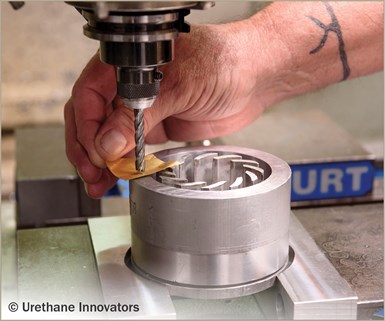High Quality Website Images Build Trust and Authority in Your Company and Brand
Your website does more than sell your products, services and your business — it also sells people on the reasons why they should do business with you. In a new video released by Google in January 2020, John Mueller explained how image search rankings work. The first tip was to provide high quality images. But, what is meant by “high quality?” And, why did Mueller put this tip first versus how to get “found” in image search?

By Rachel Cunliffe
Designer and Creative Director
Huff Industrial Marketing
In a new video released by Google in January 2020, John Mueller explained how image search rankings work. He also provided a list of technical factors that can help Google better rank your images.
The first tip was to provide high quality images. But, what is meant by “high quality?” And, why did Mueller put this tip first versus how to get “found” in image search?
”High Quality” Defined
A good website image is more than one that “looks good,” as high quality involves a number of factors.
Original file – When designing new websites or pages, we always ask for high quality images straight from the camera versus photos that have already been cropped, compressed, resized, etc.
File size – Images need to be at least one megabyte (MB) and at least 2400 px wide. We prefer to work with large sized files because they allow for greater adjustments, then upload them at the correct optimized size for your website. (Google doesn’t want to see a page with five or ten MB images.)
File format – Photographs should be in the jpeg format, which allows us to adjust the compression in order to achieve a good balance between fast loading and image storing.

In addition to these technical factors, you also want to consider the image itself. Factors that go into a high quality image include:
Composition – Avoid distractions in the background or items that make the image (or the person or your company) look bad. Even the clothing people wear, such as plaids or stripes, can be distracting.
Other distractions include dust, lint, hair, etc. on people’s clothes or reflections on eyeglasses or display monitors.
Authentic – People in photos should look natural not staged, and images shouldn’t be overly photoshopped. (Of course, if someone has a blemish or wore a shirt with a spot on it, you can and should remove these distractions.)
Lighting – Correct lighting can go far in making an “ok” photo subject look great. Over or under exposed images make it difficult to clearly see the subject; flash can add harsh shadows or unnatural colors. And, in the manufacturing environment, ceiling or machine lighting can change the color spectrum, giving your photos a green or yellow tint.
Brand alignment – High quality photos align with your brand. If your message states you provide cutting edge technology, then your photos need to reflect this versus showing dated offices, facilities, etc.
High Quality, Original Images Build on Google’s E-A-That Does Accessibility Mean for a Website?
Google recommends using original images. Why? Because original images help communicate what Google calls E-A-T: Expertise, Authority and Trust.

If I come to your website and can see your expertise because you’ve cared enough to use original photos to show you’re real, that means a great deal. I want to see what you’re making and know that you have the expertise to tackle my project.
Your website does more than sell your products, services and your business — it also sells people on the reasons why they should do business with you. Original, high quality images build this trust in a way stock photos cannot.
Manufacturing is all about trust and relationships. If people can see what it’s like to work with you and the people behind the products, they feel confident in contacting you.
Watch the John Mueller video:
https://www.seroundtable.com/google-video-on-image-search-ranking-optimization-28864.html
Read Google’s Images best practices help file:
https://support.google.com/webmasters/answer/114016?hl=en
This article first appeared in the February 2020 issue of Manufacturing Marketing Magazine. Reprinted with permission.
About the Author
Rachel Cunliffe
Rachel is the Designer and Creative Director for Huff Industrial Marketing. She draws on over 18 years experience designing websites.
RELATED CONTENT
-
Why Even a Little Data Matters (And What to Do About It)
We live in a data rich environment. Even so, many companies still struggle to transform their data into meaningful and actionable insights. Driving outcomes from your data takes turning knowledge into action. Yielding insights doesn’t take as much data as you think. Here’s a personal example of how a company could use a little data to provide a better customer experience.
-
Media Solutions to Provide Direct Reach to Markets Served
As Account Manager in Sales serving the industrial audience with the latest informational content regarding the ever changing trends, Maalik Bomar plans to continue forward providing the best customer service to those client professionals seeking a direct reach to their markets served.
-
Life On Deadline
EVP of Content and Web Kate Hand on building an unexpected career at a place that values balance.


